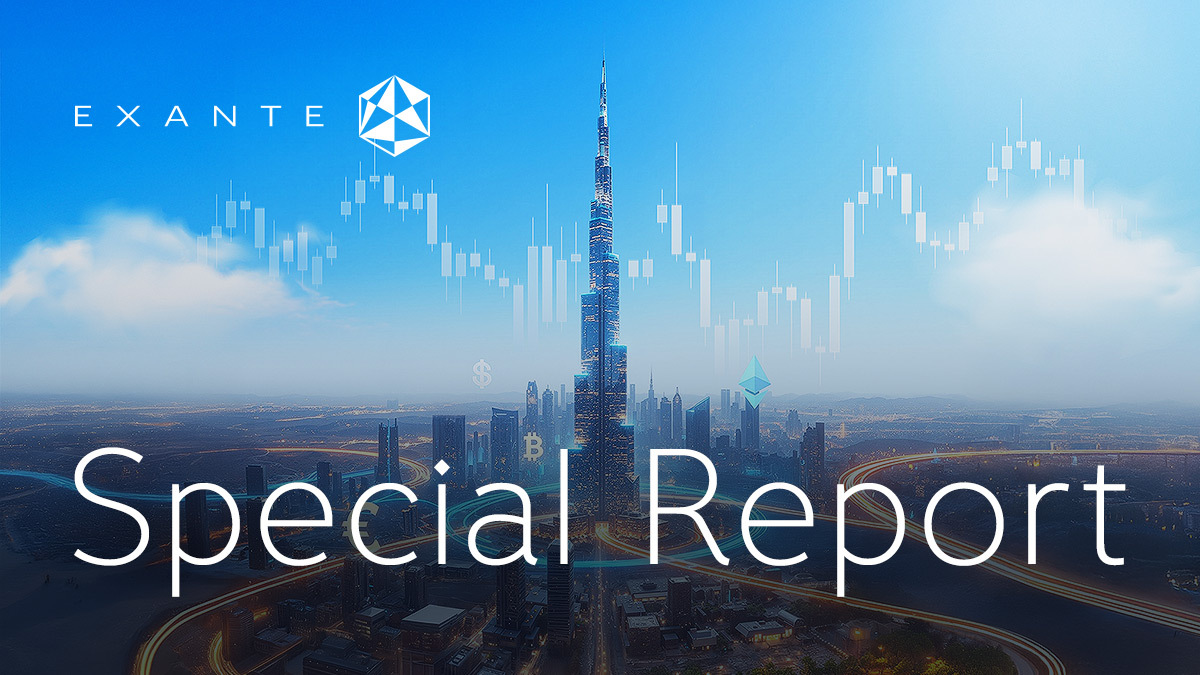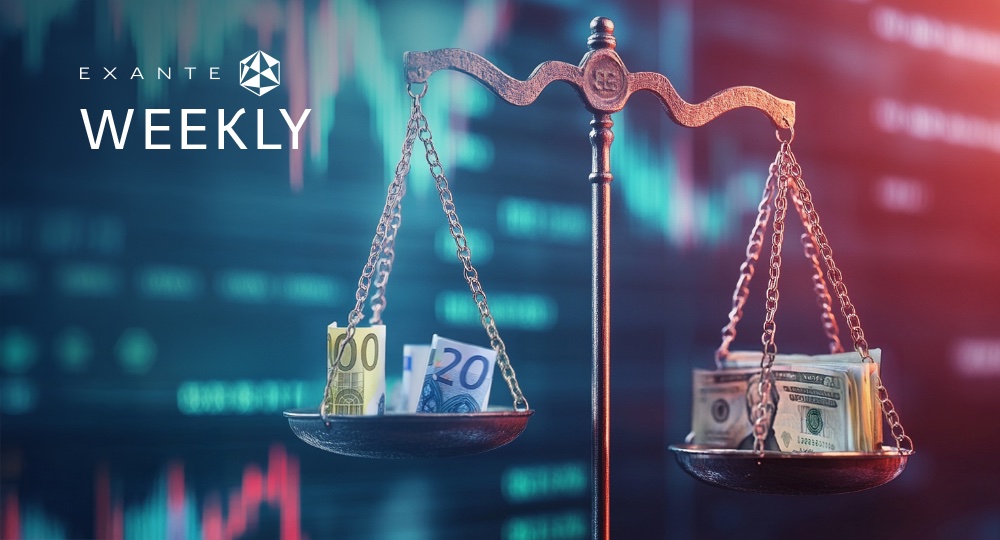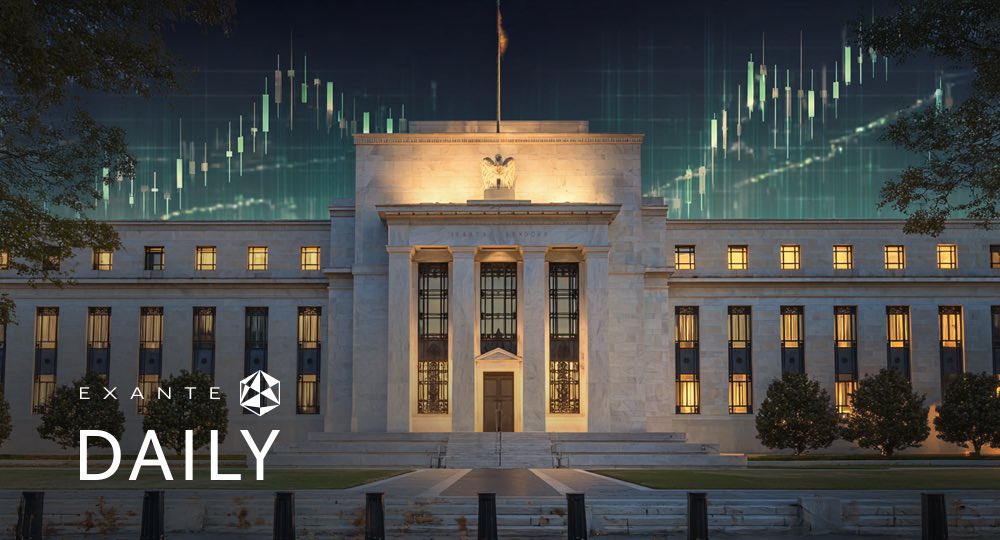
Fixed Income Briefing January 2024

- The US economy is still going strong. Retail sales in December were +0.6%, up from 0.3% in November. The labour market is holding relatively tight: nonfarm payrolls were up 216,000 in December and the unemployment rate stayed steady at 3.7%,unchanged from November and down from 3.9% in October. The Bureau of Labor Statistics (BLS) reported a rise in average hourly earnings for all nonfarm employees of 0.4% in December. This increase brings the yearly wage growth to 4.1%.
- US inflation increased 0.3% in December and 3.4% from a year ago. Excluding volatile food and energy prices, core CPI rose 0.3% for the month and 3.9% from a year ago. Much of the increase was due to rising shelter costs. The category rose 0.5% for the month and accounted for more than half the core CPI increase.
Yield curves
Rates across the US Treasury yield curve have started to rise in January. Although the Fed held rates steady at its December meeting, with expectations of 75 basis points of rate cuts in 2024, markets have continued to predict 150 basis points of cuts in 2024 with expectations remaining solid, despite suggestions by Fed policymakers otherwise, that the first cut will take place in March. The underlying growth outlook remains healthy.with the LSEG/Ipsos Primary Consumer Sentiment Index for January 2024 at 52.9, up 1.8 point. Falling energy and goods prices alone should provide a significant boost to consumers’ real income and spending power. However, there may be some concern around consumer debt levels and potential impact on the economy as credit card delinquency (30, 60 and 90 days past due) jumped higher during the third quarter of last year, surpassing pre-pandemic levels for the first time according to Federal Reserve Bank of Philadelphia data.
The yield on the 2-year Treasury note, which is highly sensitive to movement of the Fed Funds rate, is at 4.33%, down from 4.38% in December. The benchmark 10-year US Treasury note yield has risen to 4.01 from December’s 3.89%, while the yield on the 30-year bond has also risen to 4.32% from December’s 4.01%.
- The US economy is still going strong. Retail sales in December were +0.6%, up from 0.3% in November. The labour market is holding relatively tight: nonfarm payrolls were up 216,000 in December and the unemployment rate stayed steady at 3.7%,unchanged from November and down from 3.9% in October. The Bureau of Labor Statistics (BLS) reported a rise in average hourly earnings for all nonfarm employees of 0.4% in December. This increase brings the yearly wage growth to 4.1%.
- US inflation increased 0.3% in December and 3.4% from a year ago. Excluding volatile food and energy prices, core CPI rose 0.3% for the month and 3.9% from a year ago. Much of the increase was due to rising shelter costs. The category rose 0.5% for the month and accounted for more than half the core CPI increase.
Yield curves
Rates across the US Treasury yield curve have started to rise in January. Although the Fed held rates steady at its December meeting, with expectations of 75 basis points of rate cuts in 2024, markets have continued to predict 150 basis points of cuts in 2024 with expectations remaining solid, despite suggestions by Fed policymakers otherwise, that the first cut will take place in March. The underlying growth outlook remains healthy.with the LSEG/Ipsos Primary Consumer Sentiment Index for January 2024 at 52.9, up 1.8 point. Falling energy and goods prices alone should provide a significant boost to consumers’ real income and spending power. However, there may be some concern around consumer debt levels and potential impact on the economy as credit card delinquency (30, 60 and 90 days past due) jumped higher during the third quarter of last year, surpassing pre-pandemic levels for the first time according to Federal Reserve Bank of Philadelphia data.
The yield on the 2-year Treasury note, which is highly sensitive to movement of the Fed Funds rate, is at 4.33%, down from 4.38% in December. The benchmark 10-year US Treasury note yield has risen to 4.01 from December’s 3.89%, while the yield on the 30-year bond has also risen to 4.32% from December’s 4.01%.

Fed policymakers, including Atlanta Fed President Raphael Bostic, Chicago Fed President Austan Goolsbee, Cleveland Fed President Loretta Mester, and Fed New York President John Williams, are continuing to suggest to the investors that it is still premature to speculate about the timing of rate cuts.
Yield swings
Treasury yields in January have fluctuated and are generally moving upwards as policymakers stress data dependency, as global risk premia increases due to the widening of tensions in the Middle East, as tensions between the US and China are likely to rise following on from Taiwan’s election on 13 January, and as traders are starting to consider the longer term impact that US Treasury issuance, expected to nearly double to $2 trillion in 2024, will have on the yield curve and bond prices. The Fed is widely expected to hold rates at their 30-31 January meeting and will likely continue to signal that they want to see further evidence of moderating inflation or softening growth before it starts lowering rates.

Source: Bloomberg, 9:00 am EST 17 January 2024
Global Economic and Market Review
The Bank of England (BoE) held rates at 5.25% at its December meeting. Inflation rose in December to 4% in December on an annualised basis from 3.9% in November, the first time the rate has increased since February 2023. On a monthly basis CPI rose 0.4%. Core inflation, which excludes food and energy, was 5.1% in December, unchanged from the previous month. Services inflation, usually viewed as a stronger measure of domestic price pressures, rose to 6.4% in December from 6.3% in November. The labour market is cooling, with the estimated number of vacancies from October to December 2023 falling by 49,000 on the quarter to 934,000. Wage growth came in at 6.6%. The unemployment rate was largely unchanged for the quarter at 4.2%. The UK economy grew just 0.2% in the 12 months to the end of November and the outlook for 2024 is weak too. Although inflation is continuing to fall, the BoE will likely continue to worry that labour shortages will keep wage growth high and make it hard to get inflation back to its 2% target. The consumer price index is expected to tick up in January – driven by a 5% rise in the energy price cap set by regulator Ofgem for the January to March period, but to fall after that. Nevertheless, BoE Governor Andrew Bailey is unlikely to suggest rate cuts being on the agenda in Q1 or even into early Q2. The other factor that may influence the BoE’s decisions will be any fiscal policy changes that come about in March’s budget that could be inflationary.
In the eurozone 10-year yields are off their highs of 2023, but yields are also edging back up. ECB policymakers have continued to talk down the speed of potential rate cuts with ECB president Christine Lagarde telling Bloomberg TV at the World Economic Forum meeting taking place this week in Davos, Switzerland, that the ECB would have information it required on wage pressures by “late spring”. When asked if a majority of policymakers would support a rate cut in the summer as some other policymakers suggested, she said it was likely, “but I have to be reserved, because we are also saying that we are data dependent, and that there is still a level of uncertainty and some indicators that are not anchored at the level where we would like to see them.” This data would be necessary before any decision to lower borrowing costs could be made. It is very clear that the ECB is still concerned about the potential upside risks to wages and the inflationary impact that would have. Markets are now suggesting about 140 basis points in cuts by year end and, according to the Financial Times, a 95% cut by April and 20% chance of a reduction in March. The eurozone economy is continuing to weaken with German GDP shrinking 0.3% in Q4 2023 due to high inflation, elevated energy prices, rising interest rates, falling exports, and weaker industrial production.
The gap between Italy and Germany's 10-year yields, a gauge of investor sentiment towards the eurozone's more indebted countries, is, according to Worldgovernmentbond.com, 160.6 basis points, +10.1 bp this month.
Despite what appears to be a strong likelihood of a pivot in policy by the Fed, the ECB, and the BoE by the end of Q2 there are still risks that shouldn’t be ignored. There is still a possibility of further rises in oil and other energy resources if the situation in the Red Sea remains unresolved. The increased cost of shipping may prove inflationary as would any supply constraints that may develop. There is also increasing wider domestic risk and geopolitical risk from the US following Donald Trump winning the Iowa Caucus and becoming the likely Republican candidate. These results may influence the still to be decided continuing resolutions in Congress regarding the US budget and a possible government shutdown. Political uncertainty will also rise in emerging markets as Taiwan and China and the wider ASEAN region come to terms with the results of Taiwan’s election on 13 January which saw the Democratic Progressive party (DPP) scoring an unprecedented third consecutive win. Indonesia and Pakistan are holding elections in February.
It is clear that risk premia is slowly rising in January as geopolitical risks widen, concerns over growing recession risks in the eurozone become more entrenched and potential differences in inflation and consequently interest rate paths will continue to drive spread differentials. However, markets are likely to remain more positive on bonds through 2024 as markets are still counting on a softer landing as being the base case scenario.
Key risks
- Inflation fails to fall in line with projections, weighing on asset prices. It is highly anticipated that the Fed, the ECB and the BoE will begin to cut rates in 2024, with markets still betting on the Fed starting the process in March 2024 and the other central banks following by the summer. However, there are still risks that headline inflation may rise, particularly if the widening geopolitical threats in the Red Sea result in further shipping delays, creating inflationary pressures. There is also the impact of the US reaction to widening Iranian activities in Iraq and Pakistan to consider which may lead to further dollar appreciation and yield surges if investors focus on safe haven assets.
- Policymakers mistiming on credit loosening leads to recession or reinflation. Growing concerns over the slowdown in Europe could cause the Euro to fall against the USD and Sterling. Another factor for concern will be bond issuance levels. In Europe, in January alone, there is €150 billion of government bond sales. This means that there is potentially a record amount of public debt. And if the majority of that is longer term debt, then there may be an impact on yields as it’s not clear how much duration the market's ready to absorb. Also in Europe particular risks are posed by the potential for widening bond spreads, new EU budget rules, and European parliament elections. In the US the strong economy driven by the still tight labour market seems to indicate that the economy is less rate sensitive than previously thought. Therefore if the Fed cut interest rates too soon it would then add further stimulus which risks once again raising inflationary pressures.
- Geopolitical events and climate change.These include the attacks in the Red Sea from Yemen’s Iranian-backed rebel Houthis and the US led alliance response, the ongoing war in Ukraine, the tensions between NATO and Russia, the uncertainty of further financial support from the US due to US domestic policy arguments and the tensions this will raise within Europe, the likelihood of increasing tensions between the US and China following the elections in Taiwan, and the threat of civil unrest in Argentina due to the extensive austerity measures to reduce the fiscal deficit under President Milei.
While every effort has been made to verify the accuracy of this information, EXT Ltd. (hereafter known as “EXANTE”) cannot accept any responsibility or liability for reliance by any person on this publication or any of the information, opinions, or conclusions contained in this publication. The findings and views expressed in this publication do not necessarily reflect the views of EXANTE. Any action taken upon the information contained in this publication is strictly at your own risk. EXANTE will not be liable for any loss or damage in connection with this publication.
This article is provided to you for informational purposes only and should not be regarded as an offer or solicitation of an offer to buy or sell any investments or related services that may be referenced here. Trading financial instruments involves significant risk of loss and may not be suitable for all investors. Past performance is not a reliable indicator of future performance.




